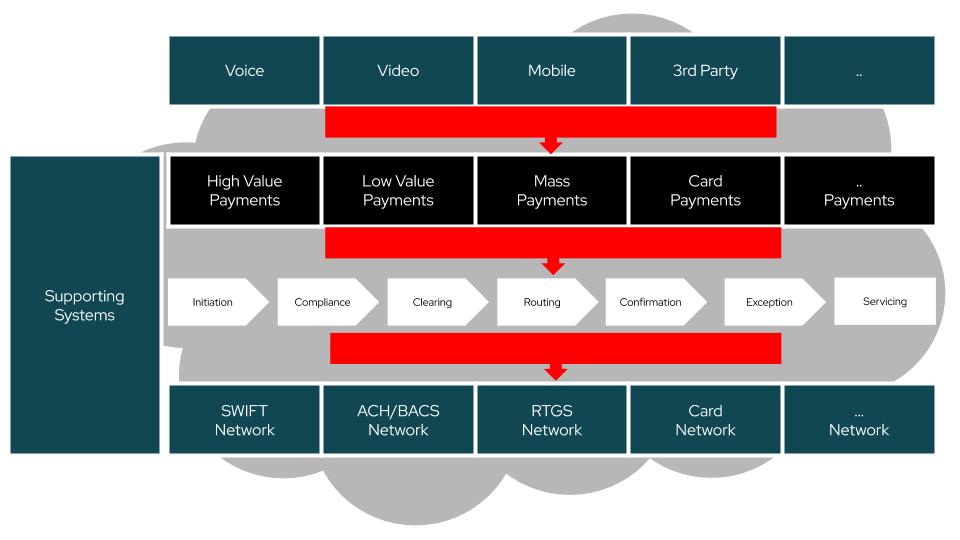The introduction of the real time payments network in the United States has presented an unique opportunity for organizations to revisit their messaging infrastructure. The primary goal of real time payments is to support real time processing, but a secondary goal is to reduce the toil of the ongoing operations and make real time ubiquitous across the organization.
Traditional message systems, have been around for quite some time, but have been a bit clunky to operate. Many times, tasks such as software upgrades and routine patches meant the messaging infrastructure would be down while the update was performed, causing delays in payment processing.This may have been reasonable in a world where payment processing was not expected outside of normal banking hours, but in our always-on digital world, customers expect their payments to clear and settle in real time. Today, outages and delays disrupt both business processes and customer experience.
Apache Kafka is an open source project that was created to provide messaging infrastructure for real time data streaming. The Strimzi project automates the setup and configuration of Apache Kafka on Kubernetes, which streamlines the process of setting up and managing the messaging infrastructure to support real time processing. The combination of these technologies is a step change from traditional message systems on virtualized infrastructure so that you can run wickedly fast, always-on service.
However, it isn’t just ease of configuration that is driving adoption of Apache Kafka on Kubernetes. The ability to automatically adjust capacity based on messaging volumes and compute levels is also attractive. Without this capability, organizations would likely default to overprovisioning of virtualized infrastructure based on projectected peak volumes to support real time processing. Of course, unused infrastructure is something most organizations try to avoid.
As the number of payment channels, methods, and networks continues to grow, organizations need to look at modernizing other parts of their payments infrastructure. As organizations seek to adopt ISO 20022 or event driven and microservice architectures there is a need to consider other capabilities (Figure 1) as well. Apache Camel-K has many of the same benefits of reducing cost and toil but is focused on connectivity instead of messaging.

With Red Hat, you can take advantage of our upstream work in Apache Kafka, Kubernetes, Istio and other communities that are making real time processing in payments a bit easier. A modern cloud platform means that you can run your payments infrastructure on-premise, off-premise or a combination of the two with a common operating environment, with the confidence of a partner whose software is trusted to support the most critical services in the world.
Go here to learn more about the key capabilities needed to make your life a bit easier while reducing the operating costs to support real time processing in your organization.
저자 소개
Anthony Golia is 20-year technology veteran in the Financial Services industry, and is passionate about collaborating with my clients to help them realize value and a competitive advantage from open source and emerging technologies in today's fast-changing industry landscape.
유사한 검색 결과
채널별 검색
오토메이션
기술, 팀, 환경을 포괄하는 자동화 플랫폼에 대한 최신 정보
인공지능
고객이 어디서나 AI 워크로드를 실행할 수 있도록 지원하는 플랫폼 업데이트
클라우드 서비스
관리형 클라우드 서비스 포트폴리오에 대해 더 보기
보안
환경과 기술 전반에 걸쳐 리스크를 감소하는 방법에 대한 최신 정보
엣지 컴퓨팅
엣지에서의 운영을 단순화하는 플랫폼 업데이트
인프라
세계적으로 인정받은 기업용 Linux 플랫폼에 대한 최신 정보
애플리케이션
복잡한 애플리케이션에 대한 솔루션 더 보기
오리지널 쇼
엔터프라이즈 기술 분야의 제작자와 리더가 전하는 흥미로운 스토리
제품
- Red Hat Enterprise Linux
- Red Hat OpenShift Enterprise
- Red Hat Ansible Automation Platform
- 클라우드 서비스
- 모든 제품 보기
툴
체험, 구매 & 영업
커뮤니케이션
Red Hat 소개
Red Hat은 Linux, 클라우드, 컨테이너, 쿠버네티스 등을 포함한 글로벌 엔터프라이즈 오픈소스 솔루션 공급업체입니다. Red Hat은 코어 데이터센터에서 네트워크 엣지에 이르기까지 다양한 플랫폼과 환경에서 기업의 업무 편의성을 높여 주는 강화된 기능의 솔루션을 제공합니다.

